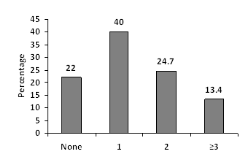2nd International Conference on Non-invasive Cardiac Imaging, Nuclear Cardiology & Echocardiography
Amsterdam, Netherlands

Fatemeh Esfarjani
Shahid Beheshti University of Medical Sciences, Iran
Title: Metabolic syndrome and blood pressure, predict cardio vascular risk factors
Biography
Biography: Fatemeh Esfarjani
Abstract
Childhood obesity increases the risk of metabolic syndrome (MetS) both in childhood and adulthood. The present study was determined the prevalence of MetS and its potential determinants in a representative sample of obese children. This cross-sectional study was conducted among 150 obese children. body mass index (BMI≥95th percentile) with seven years of age. They were randomly selected from 9 health centers in 3 districts of the north Tehran. Trained nutritionists completed a socio-demographic questionnaire by interviewing parents, and conducted the physical examination. Mets was defined based on modified ATP III criteria. The mean (SD) of weight, height, and BMI was 37.5 (6.3) kg, 127.2 (4.7) cm and 23.08 (2.9) kg/m2, respectively. The prevalence of MetS was 13.4%, without significant difference in terms of gender. The most common component of MetS was abdominal obesity (79%). While 21.3% of children did not have any component of MetS, 42% of them had at least one component. Most children with MetS had a history of breastfeeding for less than 6 months. Waist circumference, systolic and diastolic blood pressure, fasting blood glucose, and triglyceride levels were higher in Mets compared to controls (p<0.05). Logistic regression model revealed that children with birth weight of ≤2500 gr. were at higher risk of MetS than children with a higher birth weight (OR=4.3; 95%CI: 1.1-9.7). Primordial prevention of childhood obesity, screening the components of MetS among obese children and assessing the clustering of risk factors is associated with an increased risk of cardiovascular disease. Therefore, these components should be considered as a health priority at individual and public levels.

Figure 1: Frequency of obese children according to the number of metabolic syndrome components.
References:
- Kelishadi R. (2007) Childhood overweight, obesity, and the metabolic syndrome in developing countries, Epidemiologic reviews, 29 (1): 62-76.
- Karnik S, Kanekar AS., (2011) Childhood Obesity: A Global Public Health Crisis, International Journal of Preventive Medicine, 3(1).
- Sen Y, Kandemir N, Alikasifoglu A, Gonc N, Ozon A., ( 2008), Prevalence and risk factors of metabolic syndrome in obese children and adolescents: the role of the severity of obesity. European journal of pediatrics, 2008, 167(10): 1183-9.
- Esfarjani F. (2012) Assessing the effect of lifestyle modification intervention in school-age obese Children. Final Report National Nutrition and Food Technology Research Institute. Tehran, Iran.
- Barzin M, Hosseinpanah F, Saber H, Sarbakhsh P, Nakhoda K, Azizi F. (2012) Gender Differences Time Trends for Metabolic Syndrome and Its Components among Tehranian Children and Adolescents. Cholesterol, 2012.



